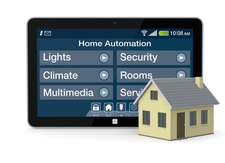The age of the Internet of Things is upon us
Rise of The Things

© Images © Lucadp, Oleg Babich, 123RF.com
The Internet of Things is predicted to be a huge market in the next 10 years, taking the dumb objects around us and making them data-noisy.
Thanks to a few technologies that have become, coincidentally, cheap, tiny, and widespread at about the same time, you are now able to bolt on sensors, computers, and communications to houses, cars, shoes, and anything else you can dream up.
As with the rise in web traffic, the rise in "thing" traffic will create a burden on infrastructure and development. The past 10 years have seen the management of cloud-scale hosting and applications improve to cope with traffic, and this will be mirrored in the next 10 years as we see more than 10 times that level of traffic added to already busy servers and sys admins.
These levels of growth always sound absurd when peddled by analysts. Cisco predicts 50 billion devices by 2020 compared with 12.5 billion in 2012. To get some intuition about this number, consider the devices per capita rather than the total number. In 2010, we had 1.84 devices per person, which is easy to see: At the moment, you have a phone, maybe a couple of tablets, a laptop, and perhaps a desktop computer. That's five things if you're geeky, so the global average being 1.84 makes intuitive sense.
[...]
Buy this article as PDF
(incl. VAT)
Buy Linux Magazine
Subscribe to our Linux Newsletters
Find Linux and Open Source Jobs
Subscribe to our ADMIN Newsletters
Support Our Work
Linux Magazine content is made possible with support from readers like you. Please consider contributing when you’ve found an article to be beneficial.

News
-
Manjaro 26.0 Primary Desktop Environments Default to Wayland
If you want to stick with X.Org, you'll be limited to the desktop environments you can choose.
-
Mozilla Plans to AI-ify Firefox
With a new CEO in control, Mozilla is doubling down on a strategy of trust, all the while leaning into AI.
-
Gnome Says No to AI-Generated Extensions
If you're a developer wanting to create a new Gnome extension, you'd best set aside that AI code generator, because the extension team will have none of that.
-
Parrot OS Switches to KDE Plasma Desktop
Yet another distro is making the move to the KDE Plasma desktop.
-
TUXEDO Announces Gemini 17
TUXEDO Computers has released the fourth generation of its Gemini laptop with plenty of updates.
-
Two New Distros Adopt Enlightenment
MX Moksha and AV Linux 25 join ranks with Bodhi Linux and embrace the Enlightenment desktop.
-
Solus Linux 4.8 Removes Python 2
Solus Linux 4.8 has been released with the latest Linux kernel, updated desktops, and a key removal.
-
Zorin OS 18 Hits over a Million Downloads
If you doubt Linux isn't gaining popularity, you only have to look at Zorin OS's download numbers.
-
TUXEDO Computers Scraps Snapdragon X1E-Based Laptop
Due to issues with a Snapdragon CPU, TUXEDO Computers has cancelled its plans to release a laptop based on this elite hardware.
-
Debian Unleashes Debian Libre Live
Debian Libre Live keeps your machine free of proprietary software.

